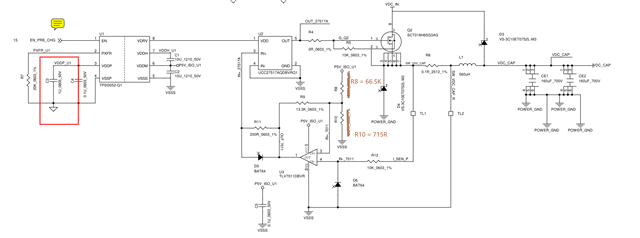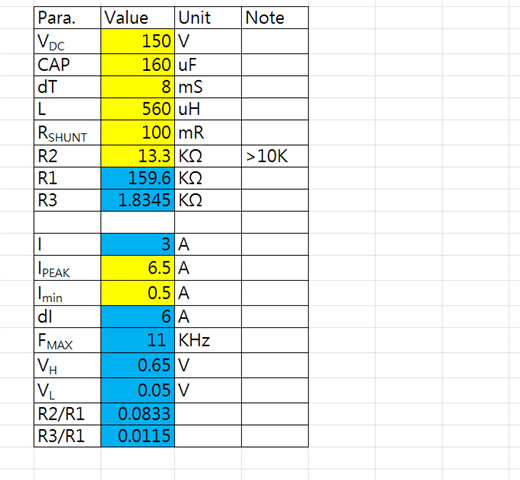Other Parts Discussed in Thread: TIDA-050063,
Hi Expert,
I refer the design guide TIDA-050063 High-Voltage Solid-State Relay Active Precharge
Below is my design Sch,

Currently, I set the Ipeak to 3A, Imin to 0.5A, and adjust the R8 to 66.5K, R10=715R, R9=13.3K, the CAP is only 160uF now.
And below is thee test result.
Vin = 50V, The result seems good and I measured the Inductor current, the Ipeak and Imin is closed to my design parameters.


But when I increase the input,
Vin = 100V, the result seems to be some problem



Vin = 150V, there are 3 ramp up steps, seems to be abnormal.

Please help me to clarify this issue.
Thanks



